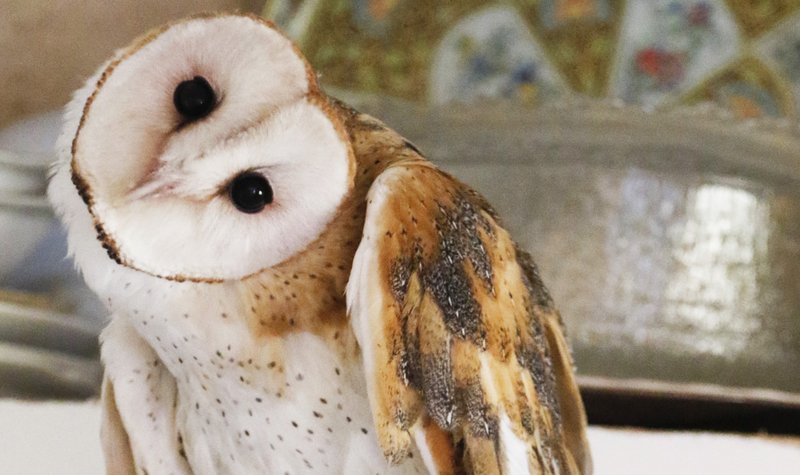When the moon hits your eye like a big pizza pie, it may not be amore at all. If you're a vole, it might be a ghostly white barn owl about to kill and eat you.
Voles are a favorite meal for barn owls, which come in two shades, reddish-brown and white. When the moon is new, both have equal success hunting for their young, snagging about five voles in a night. But when the moon is full and bright, the reddish owls do poorly, dropping to three a night.
Barn owls with white faces and breasts do as well as ever, however, even though they should be more easily spotted than their reddish relatives when the lunar light reflects off their feathers.
They may well be more easily seen, but it doesn't matter because of the behavior of their prey.
Voles have two responses to owl sightings. They freeze and hope the owl doesn't see them. Or they run. But when they see a white owl in bright moonlight, the terrified rodents act like deer caught in headlights and freeze up to 5 seconds longer than they do for a reddish-brown barn owl.
This is not what Luis M. San-Jose and Alexandre Roulin, both of the University of Lausanne in Switzerland, expected. They and other scientists reported in Nature Ecology and Evolution on Sept. 2 that they expected the white owls to do worse.
"The study is a fascinating new look at an old question: How does moonlight affect the plumage of nocturnal predators?" said Richard Prum, an evolutionary biologist and ornithologist at Yale University, who has studied how coloration evolved in birds.
He added that authors used "a remarkable array of technologies and methods" to investigate the effect of the variation.
San-Jose, who researches animal coloration, said that there has been little study of color in nocturnal animals in the past, but that has begun to change, producing many surprises in recent years.
"Many nocturnal species actually see color at night," he said. Voles probably don't. For them, the owls probably appear in shades of gray. Still, the lighter the shade, the more visible the owl.
The researchers first identified the pattern of hunting success in a group of owls that Roulin has monitored for 30 years, San-Jose said. Once they found that the white owls did better in bright moonlight, they tried some laboratory experiments with stuffed owls and captive voles to look for a reason.
The voles froze for up to 5 seconds longer when facing a white owl in conditions similar to the light of a bright full moon. There was no difference in freezing time in new moon conditions. If the same effect occurs in the wild, white owls have more time to make their kills in brighter light.
The study raises some questions. For instance, male owls are more often white, and a brighter white, than females, San-Jose said. So there is not just natural selection going on, but also sexual selection. Males do more hunting when there are young in the nest, which may mean that females see white males as better providers.
But then why aren't there even more white owls? Perhaps because red is a better camouflage and red chicks are more likely to survive. Or perhaps because owls often are attacked and harassed during the day by carrion crows, kestrels and other birds. White owls could be more vulnerable. And, of course, for females protecting young, camouflage would be better.
All of these questions will need further research to be settled.
What's most important about the study, San-Jose said, is that it brings the importance of moonlight into the light, so to speak.
"Moonlight itself can select for different colorations," he said.
"Our study shows very well that it has strong effects on the owls," which "allows us to make hypotheses as to why white owls exist."
Style on 09/16/2019

